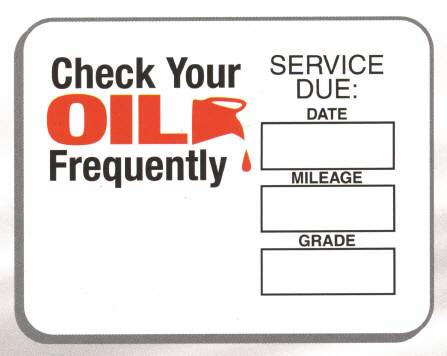
Well, beyond getting you off your weekend butt and doing something with/for your spouse – this brings me back to my AHA moment. A frequent response I hear from executives is “Our organization is running fine, we don’t have any critical issues that need to be addressed”. Every organization, just as every relationship, requires regular maintenance. Without it, you will be yesterday’s hit and tomorrow’s case study. As an Agile Executive, it is your responsibility to build regular maintenance into your organization. Let me help you understand how.
Car Maintenance Metaphor
Let me provide humor you with a brief comparison to car maintenance of what you could be looking for in your car (organization) to make sure you are keeping your engine (employees) running smoothly and efficiently.
Oil
How long has it been since you have changed your organizations oil (processes)? Oil in your engine allows it to run most efficiently. Oil in an organization allows all of its employees (the engine) to function at their peak performance. What processes are you still using from your last process improvement effort? How many years has it been since they have been reviewed or changed? Our business environments are changing with increasing velocity. Yet our processes tend to increase with our company growth. This is like adding oil to your car without ever removing the old, warn out oil. Tom Peters encourages us to “destruct” and “forget”. We need to let go of our old ways to allow room for the new ways. Its time to change your organization’s oil.
Spark Plugs
Does your organization have a spark? Are your employees excited to go to work? An engine requires sparks to ignite the fuel and drive the engine. Organizations require sparks to drive innovation and creativity. Without sparks (surprises) our engine (employees) will lose their drive to power the car (company). If you find your organization has lost its spark, throw a surprise their way. Take them on a spur of the moment outing or bring a catered lunch in. Shocking their daily system will invoke their out-of-the-box thinking and encourage creativity. It will also make your workplace a more enjoyable environment and increase productivity.
Tires
Have you rotated your organization’s tires (roles) lately? How long have employees been in their same roles? Are they learning? When tires are not rotated, they wear unevenly. When we don’t change organizational roles & responsibilities, we begin to wear down and we won’t last long. Through changing roles, responsibilities, departments, etc. we provide the opportunity to learn new parts of the business and drive innovation through increased cross-collaboration.
Battery
Have you checked your organization’s battery (energy level) lately? Have you recharged your batteries? When a battery is not recharged, it runs out of energy. Organizations under extreme pressures to run at full throttle for extended periods to meet deadlines, address issues, etc. will run out of battery power. Without a generator (energy recharging program) our engine (employees) will fail to drive our car (company). Provide opportunities for your employees to recharge their batteries. Develop a sabbatical program, encourage training, provide slack in the organization for learning, or sponsor a cross-organizational summit.
Agile methods distribute more power to the engine (employees) through increased ownership and responsibility over their processes. By regularly changing your oil (processes) you will be allowing your engine (employees) to run most efficiently. Check and rotate your tires (roles) to increase tread life (learning, satisfaction, retention, collaboration, innovation). Check your spark plugs (organizational excitement) and replace (surprise) them with new sparks. Check your battery (energy level) and recharge it (provide training, sabbaticals, etc.) to keep the engine (employees) running smoothly.
So, rather than waiting until your organization is broken, go in for a checkup today. Schedule routine checkups annually or semi-annually to evaluate what has changed in our business environment that we have not addressed? What processes should we throw away? Where should we invest more? How are we communicating to our customers? Employees? Partners? Business is changing faster today than yesterday. It will change faster tomorrow. Without routine checkups, you will be “in trouble” and the only fix will be an engine replacement!
